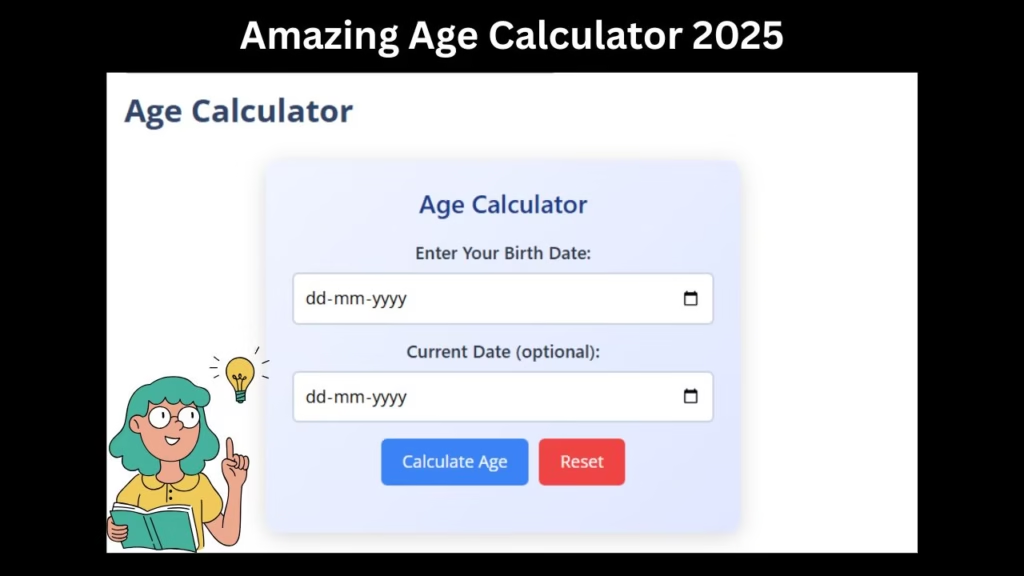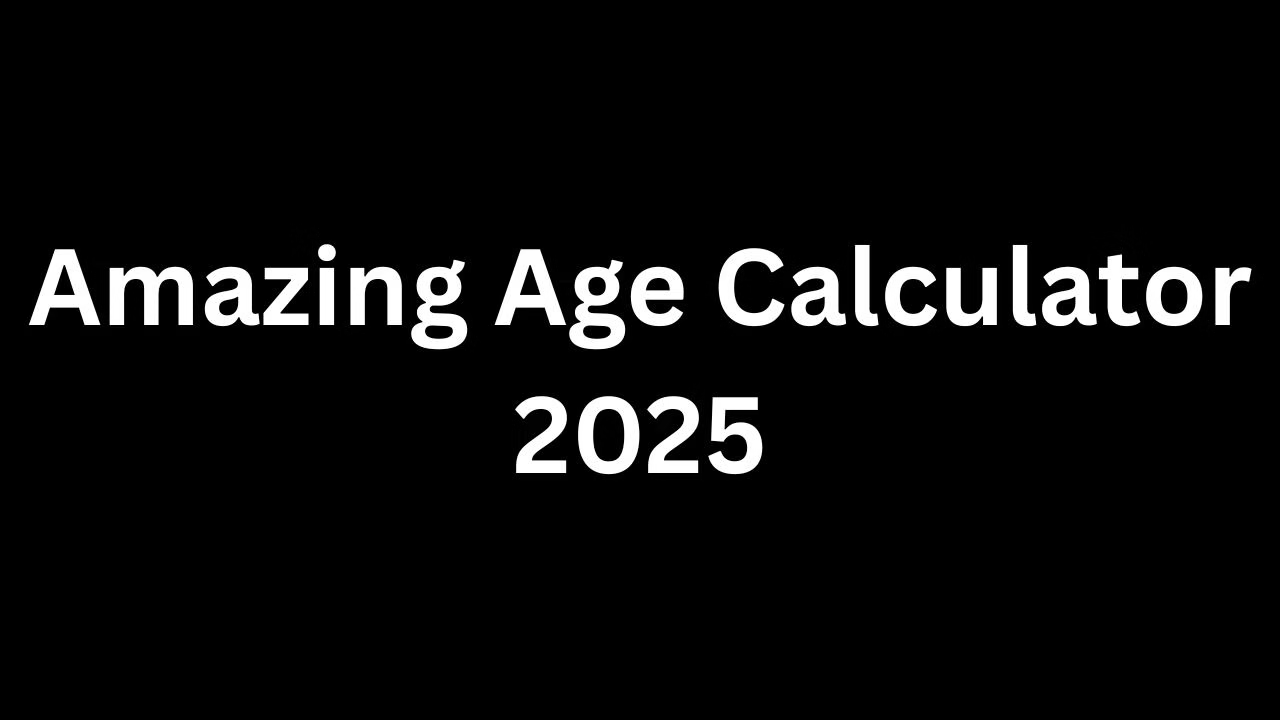Age Calculator
Age Calculator
In today’s fast-paced world, simplicity and utility hold immense value. An age calculator is one such tool that blends practicality with curiosity, offering a straightforward way to determine someone’s age without relying on artificial intelligence or complex algorithms. Unlike AI-driven apps that may harvest data or overwhelm with features, a classic age calculator is a timeless, privacy-respecting solution that anyone can use. This article explores the charm, functionality, and creative applications of an age calculator, all while keeping things uniquely human-crafted and free from AI’s touch.
At its core, an age calculator determines the time elapsed between two dates—typically a birthdate and the current date. It’s a basic mathematical operation: subtract the birth year from the current year, adjust for months and days, and voilà, you have an exact age. For example, someone born on June 15, 1990, as of April 12, 2025, would be 34 years, 9 months, and 27 days old. What makes this tool special is its universal appeal. Whether you’re a student verifying historical timelines, a parent tracking milestones, or just curious about a celebrity’s age, the calculator delivers answers instantly.
Why choose an AI-free age calculator? Privacy is a big reason. Many modern apps embed trackers or require logins, collecting data for purposes beyond the user’s intent. A simple age calculator—whether a physical chart, an Excel formula, or a basic online form—avoids these pitfalls. It’s a no-frills tool that respects your boundaries, asking only for the dates you provide. This simplicity also fosters trust, especially for those wary of tech overreach.
Beyond its core function, an age calculator sparks creativity. Planning a themed birthday party? Use it to calculate how old someone would be in “dog years” (roughly seven times human years) for a playful twist. Historians and writers can use it to anchor fictional characters in real-world timelines, ensuring accuracy. For instance, calculating the age of a character born during the 1969 moon landing adds depth to storytelling. Educators might employ it to teach subtraction or calendar concepts, turning math into a hands-on adventure.
Another unique angle is cultural exploration. Different societies mark age differently—some count from conception, others from the lunar calendar. An age calculator can bridge these perspectives by converting ages across systems, fostering understanding. Imagine comparing your “Western” age to your “Korean” age, where everyone turns a year older on New Year’s Day. It’s a small but meaningful way to connect with global traditions.
In a world obsessed with automation, the age calculator’s manual charm stands out. It invites users to engage actively, whether jotting down dates or tweaking inputs to explore “what-ifs.” It’s a reminder that not every solution needs a neural network—sometimes, a pencil, paper, and curiosity suffice. By staying AI-free, it preserves a human touch, encouraging mindfulness over mindless scrolling.
Ultimately, an age calculator is more than a tool; it’s a gateway to stories, histories, and connections. It proves that simplicity can be profound, offering clarity in a cluttered digital age. So next time you wonder about someone’s age—or even your own—reach for this humble calculator and rediscover the joy of doing things the human way.

Understanding Age Calculations Across Cultures
Age can be determined in various ways depending on cultural traditions. This calculator uses the most widespread method, where a person’s age is based on the number of birthdays they’ve celebrated. For instance, someone who has been alive for 5 years and 8 months is considered 5 years old, and their age advances to 6 on their next birthday, regardless of the exact time left until that day.
In certain cultures, age is counted differently. Some systems focus on the calendar year rather than specific birth dates. For example, a person might be described as being “in their 22nd year” rather than stating they are 21 years old, emphasizing the year they are currently living through rather than completed years.
In a traditional East Asian system, notably in parts of China, a baby is considered 1 year old at birth, and their age increases not on their birthday but at the start of the Lunar New Year. So, a child born just before the Lunar New Year could be counted as 2 years old a few days later, even though only days have passed since their birth.
Calculating age with months and days can sometimes lead to ambiguity, particularly when dates span the end of a month. For example, determining the time between February 25 and March 25 is straightforward—it’s one month.
But calculating from February 28 to March 31 can be interpreted in two ways. If we treat February 28 to March 28 as one month, the remaining days (March 28 to March 31) add 3 days, resulting in “1 month and 3 days.” Alternatively, if both dates are considered “end-of-month,” the result might be counted as simply “1 month.”
This variation arises because months have different lengths (28, 30, or 31 days). In this calculator, we use the first approach, counting exact months and adding any extra days for clarity.
JNTUK OD Apply
Apply Online for JNTUK OD 2025: Original Degree Application Form and Process: click here
JNTUK Apply Link: click here
For More Articles Visit Website
For more job updates, technology news other articles visit website click here

